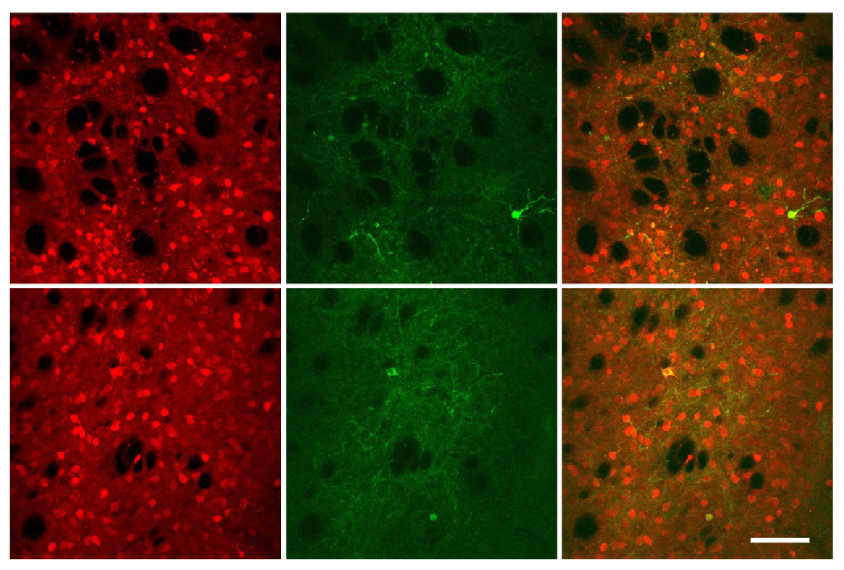
THIS ARTICLE IS MORE THAN FIVE YEARS OLD
This article is more than five years old. Autism research — and science in general — is constantly evolving, so older articles may contain information or theories that have been reevaluated since their original publication date.
A new method lets scientists monitor and manipulate groups of neurons that communicate with a specific chemical messenger, or neurotransmitter. Researchers used the method, called iTango, to identify mouse brain circuits involved in reward and movement, and to selectively stimulate cells that make mice move.
They could use the same approach to identify brain circuits involved in autism behaviors.
The method builds on optogenetics, a technique that uses blue light to activate proteins called opsins. Scientists can engineer mice to express opsins in certain types of neurons or ones within a particular brain region.
iTango, described in the May issue of Nature Methods, provides an additional layer of specificity. It triggers neurons to fire — or in some cases, light up — only in the presence of both blue light and a particular neurotransmitter.
The switch is made up of three protein complexes. One of them is anchored to the cell membrane and fused to a receptor for the neurotransmitter. When that complex binds to the neurotransmitter outside the cell, it changes shape, allowing a second complex to attach. Blue light changes the shape of the third complex, allowing it to join the other two.
When all three complexes come together, the apparatus activates a protein that turns on genes inserted into the neurons. In the new study, the researchers switched on either of two genes: one that codes for a fluorescent protein, making the cell glow, or a gene for an opsin, so that the neuron fires in response to blue light.
Directed dance:
Researchers tested iTango in mice engineered to carry the gene for the fluorescent protein. They injected the iTango complexes into the striatum, a brain region that governs motivation and motor planning. Neurons in this region communicate using the neurotransmitter dopamine.
An optical fiber inserted into the mice’s brains delivered flashes of blue light and recorded the glow of active neurons. Only the neurons that contained iTango protein complexes and that respond to dopamine lit up.
The researchers placed the mice on a large, rotating Styrofoam ball that has four different textures. When the mice stopped on a certain texture, they received a sip of sugar water.
As the mice ran and sipped their sweet treat, the researchers saw one set of neurons glow when the mice moved and a separate set glow after the treat, presumably sending a reward response.
The researchers then used iTango along with blue light to selectively activate the neurons involved in locomotion. They were able to make the mice move when they were at rest.
Three additional versions of the iTango protein complexes work on brain systems that operate using the chemical messengers neuropeptide Y, cannabinoid or serotonin.
By joining the discussion, you agree to our privacy policy.